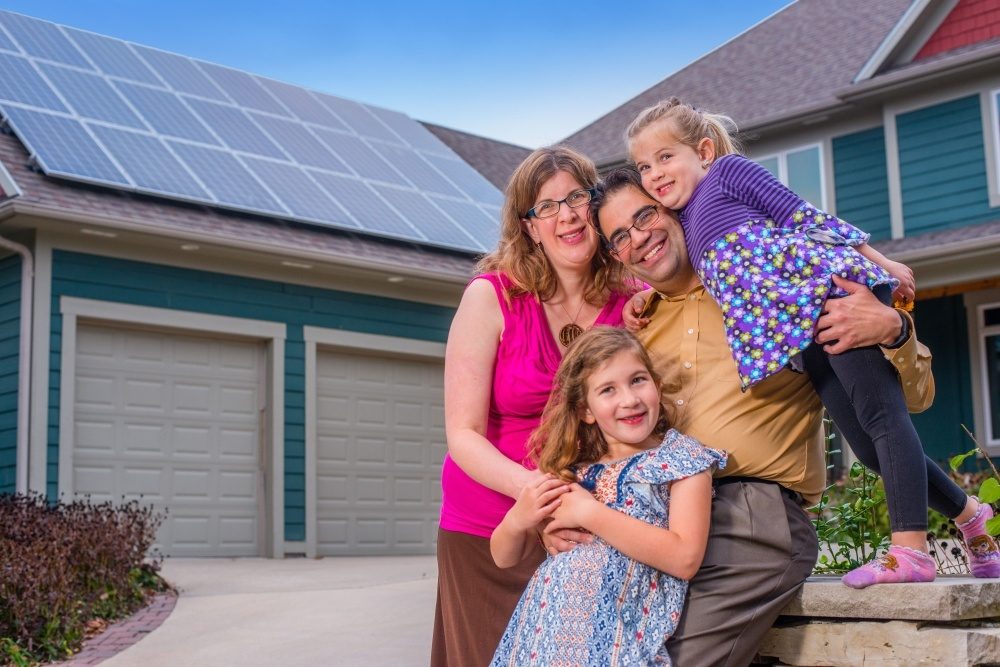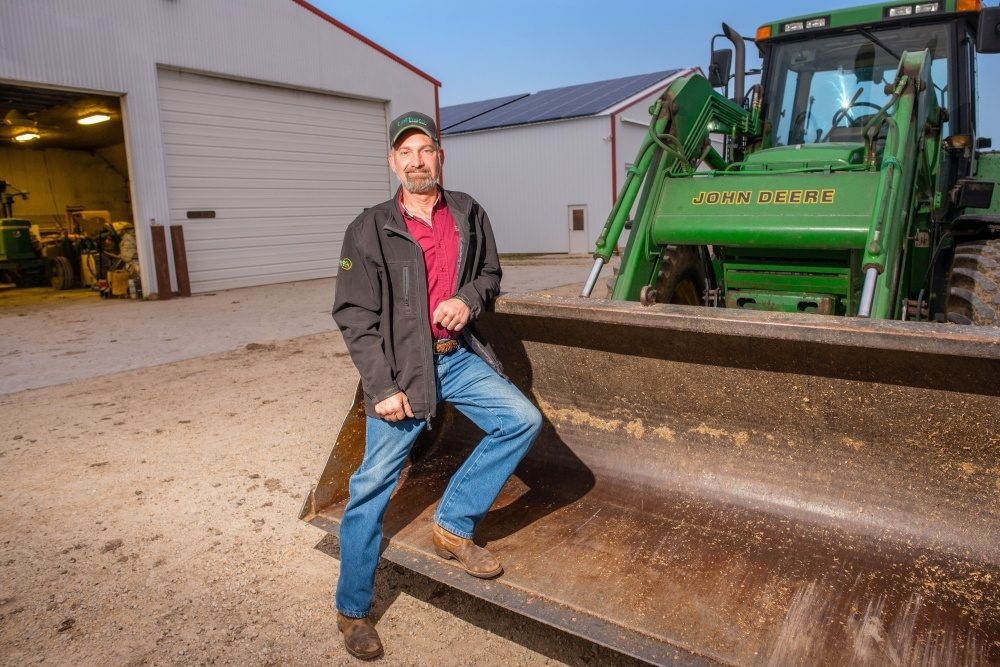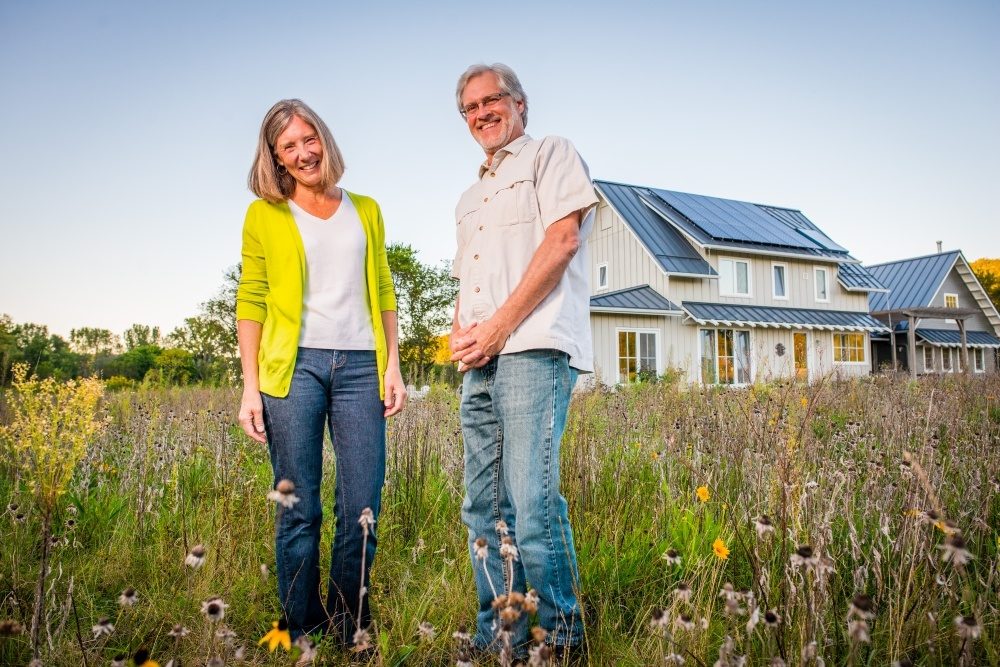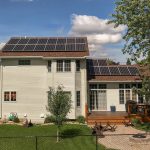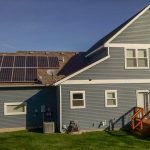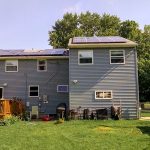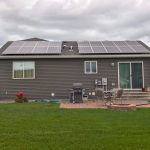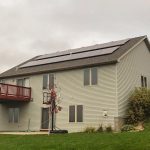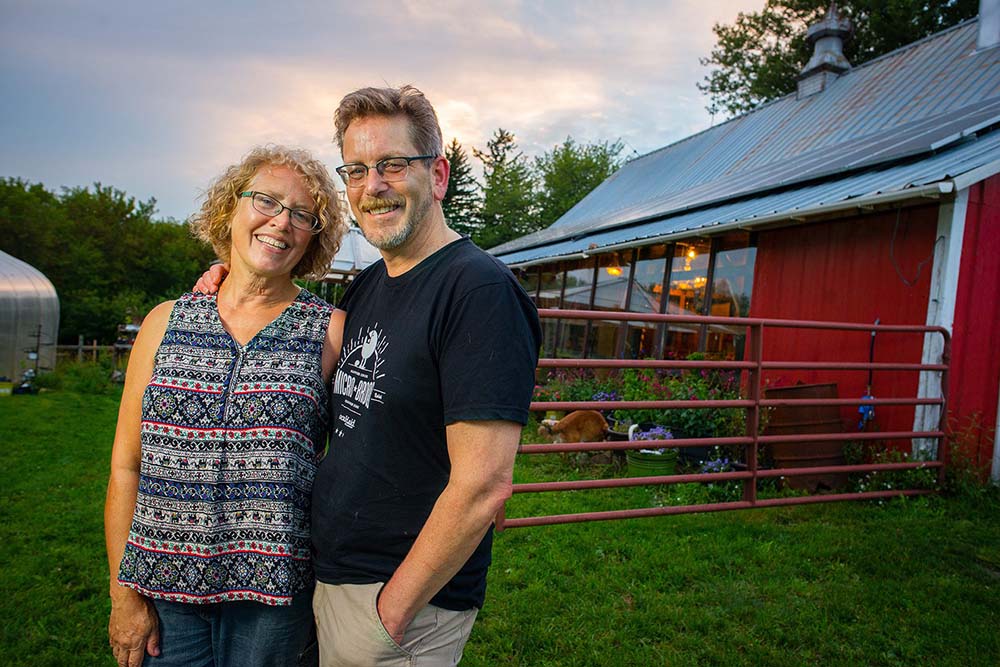
Solar for Sustainable Agriculture: Squash Blossom Farm
Roger and Susan of Squash Blossom Farm were Solar Connection’s first customers. Despite having no agricultural experience between the two of them, Roger and Susan decided to not just buy a farm—their dream of 25 years—but to transition it to permaculture.
“’Sustainability’ wasn’t the word back then, but when we bought this farm, our whole focus was to be respectful of the earth and resources.” They considered leveraging wind power because of their location on a hill, but solar won in the end because of its low maintenance and the convenience of their barn’s south-facing roof.
“The difference between wind and solar is that it’s so nice to just have it up there. There are no moving parts. It makes electricity for you and you don’t have to deal with it at all. We have a busy lifestyle with the farm, so that was important. Also, the panels are lightweight, so they don’t add any structural issues to the barn. We didn’t have to do anything to shore it up.”
The transition to solar happened in 2010 when the 30% federal tax credit for renewable energy was slated to expire, so Solar Connection and Squash Blossom Farm had to rush the installation in the dead of a Minnesota winter. Despite freezing rain, 17 inches of snow and sub-zero temperature, Solar Connection got the panels up in just two days.

Squash Blossom, best known for live music and wood-fired pizza each Sunday night, hosts an unending calendar of events. That means solar powers not just their home and farm activities, but, thanks to net metering, all the equipment for lighting, music and food prep. Alternative energy is a good fit—functionally and philosophically—with their vision that the farm be “small, historic, eclectic, picturesque… a place to celebrate art, music and community.”
“Last month, our farm purchased 711 kWh of electricity (for electricity when our solar panels were not active) and sold back 608 kWh (for electricity we produced but did not need), reducing our electric bill to $11.64, not including the monthly facility charge.”
“It’s is an integral part of the story of our farm because we’re trying to be a permaculture farm, and a key part of that is resource conservation. I think solar is probably the biggest impact we’ve had thus far.”
